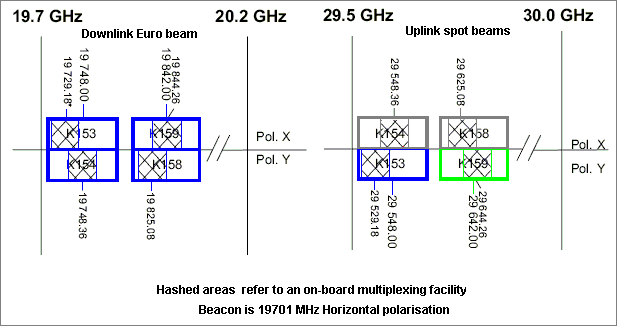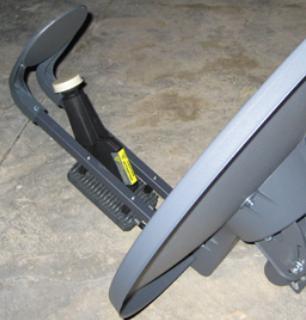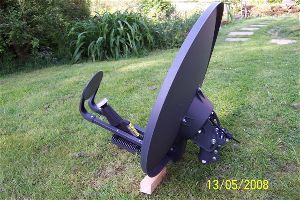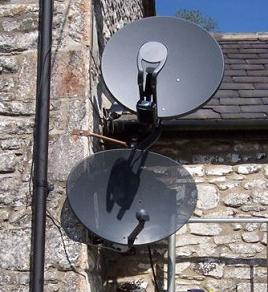| Home Login Register |
| Satellite Internet forum › TooWay and KA-SAT satellite › Anybody using TooWAY in UK? |
|
Pages: 1
|
Anybody using TooWAY in UK?(Read 30940 times) |
|
cambrian
Member
★★ Offline Posts: 48 |
Mar 30th, 2008 at 11:04am
|
| Back to top |
IP Logged
|
|
cambrian
Member
★★ Offline Posts: 48 |
Reply #1 - Apr 4th, 2008 at 9:42am
|
| Back to top |
IP Logged
|
|
RS100
Member
★★ Offline Posts: 21 |
Reply #2 - Apr 4th, 2008 at 1:02pm
|
| Back to top |
IP Logged
|
|
cambrian
Member
★★ Offline Posts: 48 |
Reply #3 - Apr 4th, 2008 at 1:49pm
|
| Back to top |
IP Logged
|
|
RS100
Member
★★ Offline Posts: 21 |
Reply #4 - Apr 6th, 2008 at 7:36pm
|
| Back to top |
IP Logged
|
|
Eric Johnston
YaBB Moderator
★★★★★ Offline Posts: 2109 |
Reply #5 - Apr 6th, 2008 at 8:46pm
|
| Back to top |
« Last Edit: Oct 11th, 2022 at 10:35am by Admin1 »
IP Logged
|
|
cambrian
Member
★★ Offline Posts: 48 |
Reply #6 - Apr 7th, 2008 at 1:29pm
|
| Back to top |
« Last Edit: Oct 11th, 2022 at 10:36am by Admin1 »
IP Logged
|
|
Eric Johnston
YaBB Moderator
★★★★★ Offline Posts: 2109 |
Reply #7 - Apr 7th, 2008 at 6:52pm
|
| Back to top |
« Last Edit: Oct 11th, 2022 at 10:36am by Admin1 »
IP Logged
|
|
cambrian
Member
★★ Offline Posts: 48 |
Reply #8 - Apr 8th, 2008 at 11:15pm
|
| Back to top |
IP Logged
|
|
cambrian
Member
★★ Offline Posts: 48 |
Reply #9 - Apr 18th, 2008 at 9:00pm
|
| Back to top |
IP Logged
|
|
Eric Johnston
YaBB Moderator
★★★★★ Offline Posts: 2109 |
Reply #10 - Apr 18th, 2008 at 11:46pm
|
| Back to top |
« Last Edit: Oct 11th, 2022 at 10:37am by Admin1 »
IP Logged
|
|
cambrian
Member
★★ Offline Posts: 48 |
Reply #11 - Apr 19th, 2008 at 5:08pm
|
| Back to top |
IP Logged
|
|
cambrian
Member
★★ Offline Posts: 48 |
Reply #12 - May 11th, 2008 at 8:38pm
|
| Back to top |
IP Logged
|
|
Eric Johnston
YaBB Moderator
★★★★★ Offline Posts: 2109 |
Reply #13 - May 12th, 2008 at 9:34am
|
| Back to top |
IP Logged
|
|
cambrian
Member
★★ Offline Posts: 48 |
Reply #14 - May 12th, 2008 at 4:44pm
|
| Back to top |
IP Logged
|
|
Eric Johnston
YaBB Moderator
★★★★★ Offline Posts: 2109 |
Reply #15 - May 12th, 2008 at 7:11pm
|
| Back to top |
« Last Edit: Oct 11th, 2022 at 10:45am by Admin1 »
IP Logged
|
|
cambrian
Member
★★ Offline Posts: 48 |
Reply #16 - May 12th, 2008 at 8:41pm
|
| Back to top |
IP Logged
|
|
Eric Johnston
YaBB Moderator
★★★★★ Offline Posts: 2109 |
Reply #17 - May 12th, 2008 at 10:34pm
|
| Back to top |
« Last Edit: Oct 11th, 2022 at 10:45am by Admin1 »
IP Logged
|
|
cambrian
Member
★★ Offline Posts: 48 |
Reply #18 - May 13th, 2008 at 10:18am
|
| Back to top |
« Last Edit: May 13th, 2008 at 11:32am by Eric Johnston »
IP Logged
|
|
Eric Johnston
YaBB Moderator
★★★★★ Offline Posts: 2109 |
Reply #19 - May 13th, 2008 at 11:13am
|
| Back to top |
« Last Edit: Oct 11th, 2022 at 10:46am by Admin1 »
IP Logged
|
|
cambrian
Member
★★ Offline Posts: 48 |
Reply #20 - May 13th, 2008 at 12:09pm
|
| Back to top |
« Last Edit: May 13th, 2008 at 1:40pm by Eric Johnston »
IP Logged
|
|
Eric Johnston
YaBB Moderator
★★★★★ Offline Posts: 2109 |
Reply #21 - May 13th, 2008 at 1:39pm
|
| Back to top |
« Last Edit: Oct 11th, 2022 at 10:44am by Admin1 »
IP Logged
|
|
cambrian
Member
★★ Offline Posts: 48 |
Reply #22 - May 13th, 2008 at 3:31pm
|
| Back to top |
IP Logged
|
|
cambrian
Member
★★ Offline Posts: 48 |
Reply #23 - May 14th, 2008 at 8:32pm
|
| Back to top |
IP Logged
|
|
cambrian
Member
★★ Offline Posts: 48 |
Reply #24 - May 17th, 2008 at 2:34pm
|
| Back to top |
IP Logged
|
|
RS100
Member
★★ Offline Posts: 21 |
Reply #25 - Jun 13th, 2008 at 12:47pm
|
| Back to top |
IP Logged
|
|
cambrian
Member
★★ Offline Posts: 48 |
Reply #26 - Jun 13th, 2008 at 11:19pm
|
| Back to top |
« Last Edit: Oct 11th, 2022 at 10:47am by Admin1 »
IP Logged
|
|
Carl_BW
Member
★★ Offline Posts: 31 |
Reply #27 - Jun 14th, 2008 at 5:22pm
|
| Back to top |
IP Logged
|
|
NotesConsultants
Member
★★ Offline Posts: 18 Spain |
Reply #28 - Jun 14th, 2008 at 10:17pm
|
| Back to top |
IP Logged
|
|
cambrian
Member
★★ Offline Posts: 48 |
Reply #29 - Jun 15th, 2008 at 12:01pm
|
| Back to top |
IP Logged
|
|
cambrian
Member
★★ Offline Posts: 48 |
Reply #30 - Jun 20th, 2008 at 4:09pm
|
| Back to top |
IP Logged
|
|
Pages: 1
|
Email me: eric@satsig.net
Powered by YaBB 2.5.2!
YaBB Forum Software © 2000-. All Rights Reserved.
Disclaimer, Terms of Use and Privacy Forum User Agreement Forum rules Cookie policy.








